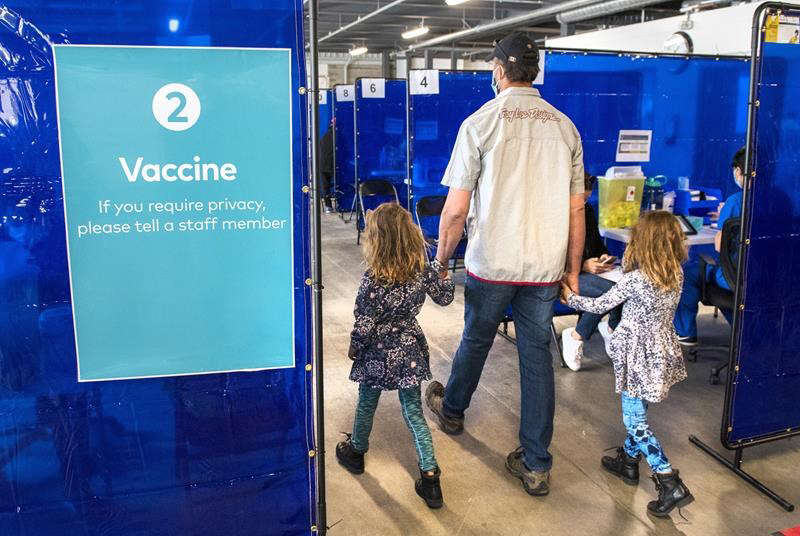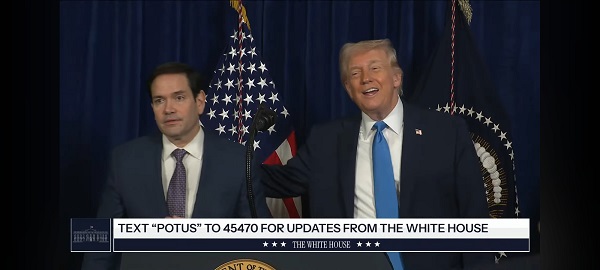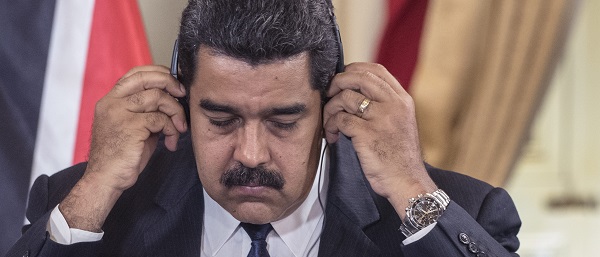COVID-19
Fraud and Abuse Denied EI Claims for the Unvaccinated

From the Frontier Centre for Public Policy
By Lee Harding
Should Canadians who lost their jobs over vaccine mandates have been denied Employment Insurance? Certified financial examiner Lex Acker says no, and that $12.9 billion of EI should have been paid out.
Acker presented his findings June 2 in Regina at the National Citizens Inquiry on COVID-19. His wife, a Nanaimo, BC nurse not named in his testimony, lost her job due to non-compliance with vaccine mandates.
Late in 2021, federal Employment Minister Carla Qualtrough announced that unvaccinated employees would be denied Employment Insurance (EI), but Acker’s wife applied just the same.
According to Acker, a subsequent appeal included a reference to a Supreme Court ruling in which medical coercion was found to equate to assault. An EI agent admitted to Acker that the appeal “got everyone’s attention” at the federal agency but was denied anyway.
Acker applied for all documentation related to the decision and received 1200 pages. Included was a 12-page document entitled BE Memo 2021-10, which directed EI agents on how to administer claims for the unvaccinated.
“The memorandum is not linked to any legislative or regulatory amendments,” the memo explained.
Given the minister’s announcement all such cases would be denied, the memo seems little more than pretense, despite its apparent departure from normal practice.
The memo mandated three requirements to establish a finding of misconduct for an applicant.
- “The employer has adopted and communicated a clear mandatory vaccination policy to all affected employees;”
- “The employees are aware that the failure to comply with the policy would cause a loss of employment;”
- “The application of the policy to the employee is reasonable within the workplace context.”
According to the response to Acker’s wife, which Acker included in a sworn affadavit, the EI agent on the case asked the Vancouver Island Health Authority for the appropriate documentation. The Ei agent noted such documentation was never received, yet denied the claim with the words, “Misconduct proven.”
The EI memo explicitly stated that claimants could still bring Charter arguments forward. Then again, the memo also validated an “employer’s professional expectations,” an apparent veiled reference to vaccination. The memo explained that it was not enough for applicants to say they suffered “discrimination.” Instead, ”the client must be able to demonstrate how they were discriminated against and on what grounds.”
It’s not clear how that would happen if the minister directed all applications to be refused.
Remarkably, the EI agent in Acker’s case acknowledged stated arguments against the safety and efficacy of the vaccines, but said assessing such judgments was beyond the scope of an EI agent, as were “Charter Rights violation arguments.” The agent told Acker to turn to “the Courts, Human Rights Commission, Labour Standards” instead.
The memo said that claimants citing a religious exemption had to show “a clear link” with proof “that the client’s religion is preventing them from being vaccinated” but not use a Bible or Qu’ran.
“[T]he interpretation of sacred texts by the client themselves must not be seen as a particular practice required by their faith,” the memo explained.
The employer also had wide discretion on what medical exemptions to accept.
“In some cases, the employer can refuse to accept a medical certificate because it does not meet the conditions of the employer’s mandatory vaccination policy,” the memo explained.
“However, the client could have another credible medical reason, such as a mental illness or other condition justifying their refusal.”
If the suggestion mental illness could have contributed to vaccine refusals isn’t biased, then what is?
On Substack, Acker estimated a 9.7% termination rate from positions in B.C. Health, based on vacant positions. His analysis of employer pension contributions suggested similar termination rates of 8.6% to 11.5%.
Acker extrapolated these vaccination and employment rates, and the average EI payout of $26,000, to estimate that unvaccinated Canadians forfeited $12.9 billion in EI claims.
A lay perusal of the criminal code by the analyst suggested potential avenues for litigation, such as fraud, breach of trust by a public officer, and disobeying a statute. Tort for misfeasance in public office might also be a civil remedy.
Acker said the EI rejections were due to systemic fraud and abuse, and he has made a good case. Canadians bemoaning the failed government response to the pandemic have yet another reason to demand accountability.
Lee Harding is a Research Fellow at the Frontier Centre for Public Policy
COVID-19
A new study proves, yet again, that the mRNA Covid jabs should NEVER have been approved for young people.

2.7 million Spanish children and teenagers. ZERO Covid deaths.
Here’s some news from Spanish researchers: contrary to what American health bureaucrats said for years to justify the increasingly insane mRNA “vaccine” experiment, Covid doesn’t kill kids.
—
(More facts, fewer guesses. For pennies a day.)
—
Yes, making categorical statements like “Covid doesn’t kill kids” is foolish.
Look hard enough, and there will be an exception, perhaps a child terminally ill with cancer pushed over the edge by Covid.
But the Spanish study, which was peer-reviewed and published in The Pediatric Infectious Disease Journal, proves yet again that Covid’s risk is too low to measure — not just not to healthy children, but to all children. It is the strongest evidence yet that the oft-repeated claim that Covid has killed 2,100 American children is fiction.¹
The researchers examined medical records from 2.7 million Spanish children and teenagers from mid-2021 through the end of 2022, a period in which the Omicron variant infected almost everyone worldwide with Covid. The vast majority of those kids and adolescents, about 2.2 million, had not been vaccinated.
Yet none of those 2.7 million died of Covid.
None. As in zero.
—
(Good thing we closed the schools!)
(SOURCE)
—
There really isn’t much more to say about the paper, except that the authors couldn’t find any difference for Covid hospitalization rates between vaccinated and unvaccinated kids under 12.
For adolescents 12-17, they calculated about 38,000 mRNA jabs were required to avoid one Covid hospitalization — an absurdly high number given the known short-term side effects of the shots and the potential long-term risks of exposing young people to mRNA.
At this point, any physician who recommends Covid jabs for kids (as a handful, mostly in blue states, still are) should be sued for malpractice.
—
One final note: this week’s immigration articles have gotten a LOT of likes and comments, more than any recent Covid or mRNA pieces. More new subscribers too.
I expect that will be true again today, though I hope you’ll prove me wrong. I understand. We all have moved on.
But when studies like this new one come out, covering them is crucial.
Nearly 1.5 billion people received mRNA Covid jabs worldwide, including perhaps 100 million kids and teenagers in the United States, Canada, Japan, Europe, and elsewhere. And the American public health establishment and legacy media outlets continue to push mRNA on children and fight even modest efforts to tighten restrictions on mRNA Covid jabs.
Witness the furious pushback Food and Drug Administration chief medical officer Dr. Vinay Prasad received in late November after he reported FDA reviewers found Covid shots had killed children.
So, even as I write about immigration, healthcare fraud, and other topics vital to you, I believe I have a duty to continue to update the factual record about the mRNAs. Duty is not too strong a word. In June 2023, I covered a paper from South Korean researchers about cardiac deaths of young adults who had received the mRNA jabs.
It is no exaggeration to say no one else — no other journalist or scientist covering Covid or the jabs — paid attention to that paper at the time . But now, in the wake of Prasad’s bombshell memo, I’ve again raised that paper. Even the mRNA fanatics at the Atlantic have been forced to acknowledge it.
It’s impossible to know if these articles will matter today, tomorrow, or years from now. But as long as the mRNA companies and their public health handmaidens keep pushing this troubled technology, I’ll keep trying to build the most complete possible record.
—
(And I hope you will support me.)
(More facts, fewer guesses. For pennies a day.)
That 2,100 death figure, which the American Academy of Pediatrics loves to quote, appears to come from a 2023 paper from the National Academy of Medicine paper that in turn relies on Centers for Disease Control data. But the CDC figures no distinction between “with” and “from” Covid deaths, which are particularly important in groups at low baseline risk from Covid. Further, the fact that the number hasn’t been updated in almost three years suggests that the people quoting it know it’s nonsense and don’t want to double-check it, much less try to update it.
What, kids just stopped dying from Covid in 2023 after getting mowed down during the first three years of the epidemic?
|
|||
|
|||||
|
|||||
| Independent, citizen-funded journalism |
COVID-19
Judge denies Canadian gov’t request to take away Freedom Convoy leader’s truck

From LifeSiteNews
A judge ruled that the Ontario Court of Justice is already ‘satisfied’ with Chris Barber’s sentence and taking away his very livelihood would be ‘disproportionate.’
A Canadian judge has dismissed a demand from Canadian government lawyers to seize Freedom Convoy leader Chris Barber’s “Big Red” semi-truck.
On Friday, Ontario Court of Justice Judge Heather Perkins-McVey denied the Crown’s application seeking to forfeit Barber’s truck.
She ruled that the court is already “satisfied” with Barber’s sentence and taking away his very livelihood would be “disproportionate.”
“This truck is my livelihood,” said Barber in a press release sent to LifeSiteNews.
“Trying to permanently seize it for peacefully protesting was wrong, and I’m relieved the court refused to allow that to happen,” he added.
Criminal defense lawyer Marwa Racha Younes was welcoming of the ruling as well, stating, “We find it was the right decision in the circumstances and are happy with the outcome.”
John Carpay, president of the Justice Centre for Constitutional Freedoms (JCCF), said the decision is “good news for all Canadians who cherish their Charter freedom to assemble peacefully.”
READ: Freedom Convoy protester appeals after judge dismissed challenge to frozen bank accounts
“Asset forfeiture is an extraordinary power, and it must not be used to punish Canadians for participating in peaceful protest,” he added in the press release.
As reported recently by LifeSiteNews, the Canadian government claimed that Barber’s truck is an “offence-related property” relating to his involvement in the 2022 protests against Canada’s COVID mandates.
At this time, the court ruling ends any forfeiture proceedings for the time being, however Barber will continue to try and appeal his criminal conviction and house arrest sentence.
Barber’s truck, a 2004 Kenworth long-haul he uses for business, was a focal point in the 2022 protests. He drove it to Ottawa, where it was parked for an extended period of time, but he complied when officials asked him to move it.
On October 7, 2025, after a long trial, Ontario Court Justice Perkins-McVey sentenced Barber and Tamara Lich, the other Freedom Convoy leader, to 18 months’ house arrest. They had been declared guilty of mischief for their roles as leaders of the 2022 protest against COVID mandates, and as social media influencers.
Lich and Barber have filed appeals of their own against their house arrest sentences, arguing that the trial judge did not correctly apply the law on their mischief charges.
Government lawyers for the Crown have filed an appeal of the acquittals of Lich and Barber on intimidation charges.
The pair’s convictions came after a nearly two-year trial despite the nonviolent nature of the popular movement.
-

 Energy2 days ago
Energy2 days agoThe U.S. Just Removed a Dictator and Canada is Collateral Damage
-

 International2 days ago
International2 days agoUS Justice Department Accusing Maduro’s Inner Circle of a Narco-State Conspiracy
-

 Haultain Research2 days ago
Haultain Research2 days agoTrying to Defend Maduro’s Legitimacy
-

 International2 days ago
International2 days agoU.S. Claims Western Hemispheric Domination, Denies Russia Security Interests On Its Own Border
-

 Daily Caller1 day ago
Daily Caller1 day agoTrump Says US Going To Run Venezuela After Nabbing Maduro
-

 Opinion1 day ago
Opinion1 day agoHell freezes over, CTV’s fabrication of fake news and our 2026 forecast is still searching for sunshine
-

 International2 days ago
International2 days ago“It’s Not Freedom — It’s the First Step Toward Freedom”
-

 Daily Caller1 day ago
Daily Caller1 day agoScathing Indictment Claims Nicolás Maduro Orchestrated Drug-Fueled ‘Culture Of Corruption’ Which Plagued Entire Region





